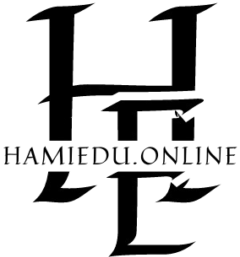The important definition is the one related to inflation, which defines an increase in the general price levels of the economy over a period of time, therefore falling the purchasing power. Even if it sounds simple, it can be further divided into various classes. Each of these groups is activated by different forces and has different qualities. Such an kind of inflationary types is, of course, imperative for the policy-makers, businesses and customers in order to adjust to the ever-changing economic situations aided with the potentials of inflation.

1. Demand-Pull Inflation.
For many peoples across the globe, including those in advanced economies, inflation rates are growing due to high import prices and strong demand pull factors. This type of inflation known as demand-pull inflation is powered by strong economic activity where customers and trades have good purchasing power. In preparation, demand-pull inflations include:
Economic Expansion. When an economy grows, more jobs become obtainable, and people have more money to apply leading to more purchases.
Consumer Sentiment. If consumers trust and observe that their future income will increase, they incline to purchase more goods relatively than save, thus growing domestic demand.
Public Expenditures: These refer to policies or actions accepted by governments meant at economic inspiration. For example, when a government returns extra tax revenue to the economy through numerous programs focused on economic recovery.Since demand generates more sales (but, in this case, sales are limited), demand-pull inflation continues to protrude the economy.
2. Cost Push Inflation
On the other hand, cost-push inflation relates to inflation produced by an increase in the factors of manufacture. In similar states, when manufacturers experience increasing costs of raw materials, labor or any other creative factors, sometimes they adjust their prices upwards. Cost-push inflation can also be activated by :
Raising the price of Raw Materials. If there is an rapid increase in prices of raw supplies such as oil or metal, production costs may be extremely raised.
Increase in Wages. If governments or employment unions force salary rises, prices may be adjusted up to enable organizations realize targeted profit levels.
Supply Chain Constraints. Floods; geopolitical pressures are some of the details that can pressure the supply of goods and subsequently raise the price of those goods.
Cost-push inflation is associated with bigger costs and economic falling conditions due to underlying physical factors such as low wage growth relative to inflation.

3. Built-In Inflation.
At times called wage-price inflation, built-in inflation is a type of inflation produced by inflationary prospects. For example, I give rise to self-fulfilling prophecies in the sense that because businesses erect the price of their goods up and workers increase their wage, the inflation rate endures to be high. Built-in rise occurs when:
Wage-Price Spiral. This is when workers ask for higher salaries to uphold the same level of their real income. When such wage increases are given by bosses, they tend to rise the prices of commodities in order to finance the extra costs which therefore leads to inflation.
Inflation Expectations. This is a situation where if consumers develop an expectation for prices to increase, they may rush to the market to purchase some goods in expectation of higher prices or when they even do not need those items. This leads to an inflation outpouring.
Such inflation is much more stimulating to control since such factors are based on features of perception and hope rather than in embryonic conditions existing within the economy per se.
4. Hyperinflation.
Hyperinflation can be described as a form of inflation so dangerous that it is sometimes said to surpass 50% per month. As the economy summersaults or gross mismanagement of public spending is witnessed, this can often lead to a situation of hyperinflation. Examples in the history of hyperinflation include:
Weimar Germany (1920s). After the burdens of WW1, returns and a sign. Weak economy led to an unstable currency inflation in post-war Germany.
Zimbabwe (2000s).The price level in Zimbabwe increased due to useless economic policies, making prices to almost multiply in around a week.
The phenomenon of hyperinflation is capable of inflicting severe and disastrous costs on the economy by rubbing out savings as well as making low-level dealings very hard to accomplish.
5. Stagflation.
The term stagflation is used to describe a period branded by still economic growth, high levels of unemployment and inflation. It shows to be a difficult challenge for the establishments as the usual actions taken in order to deal with inflation (such as increases in the interest rates) may in turn deteriorate the levels of unemployment and the rate of growth. An illustration of stagflation in the United States is the decade of the 1970s when oil shocks and inflation coexisted with economic stagnation.
Conclusion
It is of great importance to know the different types of inflation so as to be able to assess the state of the economy and the suitable events to be employed. All these anxieties come with their odd problems which demand exact solutions.
